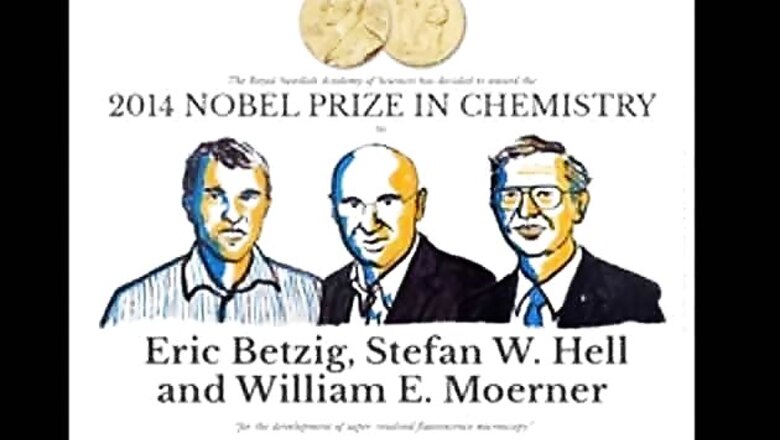
views
Stockholm: Eric Betzig, Stefan W. Hell and William E Moerner was awarded the 2014 Nobel Prize for Chemistry on Wednesday for their path-breaking work in the development of super-resolved fluorescence microscopy.
While Betzig, Moerner are from the United States, Stefan W Hell is from Germany.
The Nobel Laureates in Chemistry 2014, have successfully brought optical microscopy into the nanodimension. They employed fluorescent molecules to circumvent the limitation that optical microscopy would never obtain a better resolution than half the wavelength of light.
Nanoscopy is the visualisation of the pathways of individual molecules inside living cells. It enables scientists to see how molecules create synapses between nerve cells in the brain; track proteins involved in Parkinson's, Alzheimer's and Huntington's diseases as they aggregate; and follow individual proteins in fertilized eggs as these divide into embryos.
It was all but obvious that scientists should ever be able to study living cells in the tiniest molecular detail. In 1873, the microscopist Ernst Abbe stipulated a physical limit for the maximum resolution of traditional optical microscopy: it could never become better than 0.2 micrometres. Eric Betzig, Stefan Hell and William Moerner have been awarded the Nobel Prize in Chemistry 2014 for having bypassed this limit. Due to their achievements the optical microscope can now peer into the nanoworld.
Two separate principles are rewarded. One enables the method stimulated emission depletion (STED) microscopy, developed by Stefan Hell in 2000. Two laser beams are utilized; one stimulates fluorescent molecules to glow, another cancels out all fluorescence except for that in a nanometre-sized volume. Scanning over the sample, nanometre for nanometre, yields an image with a resolution better than Abbe's stipulated limit.
Eric Betzig and William Moerner, working separately, laid the foundation for the second method, single-molecule microscopy. The method relies upon the possibility to turn the fluorescence of individual molecules on and off. Scientists image the same area multiple times, letting just a few interspersed molecules glow each time. Superimposing these images yields a dense super-image resolved at the nanolevel. In 2006 Eric Betzig utilized this method for the first time.
Today, nanoscopy is used world-wide and new knowledge of greatest benefit to mankind is produced on a daily basis.



















Comments
0 comment